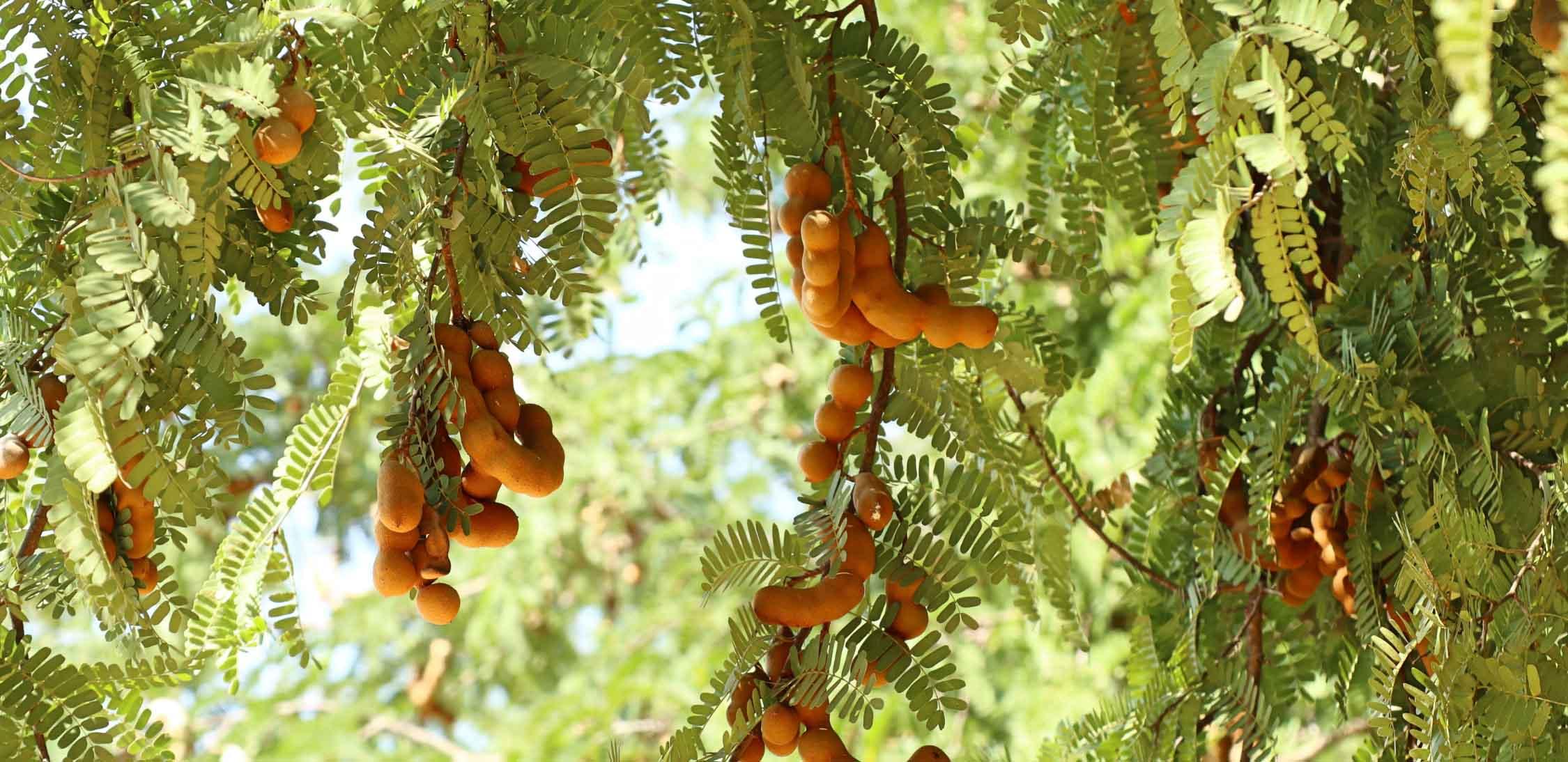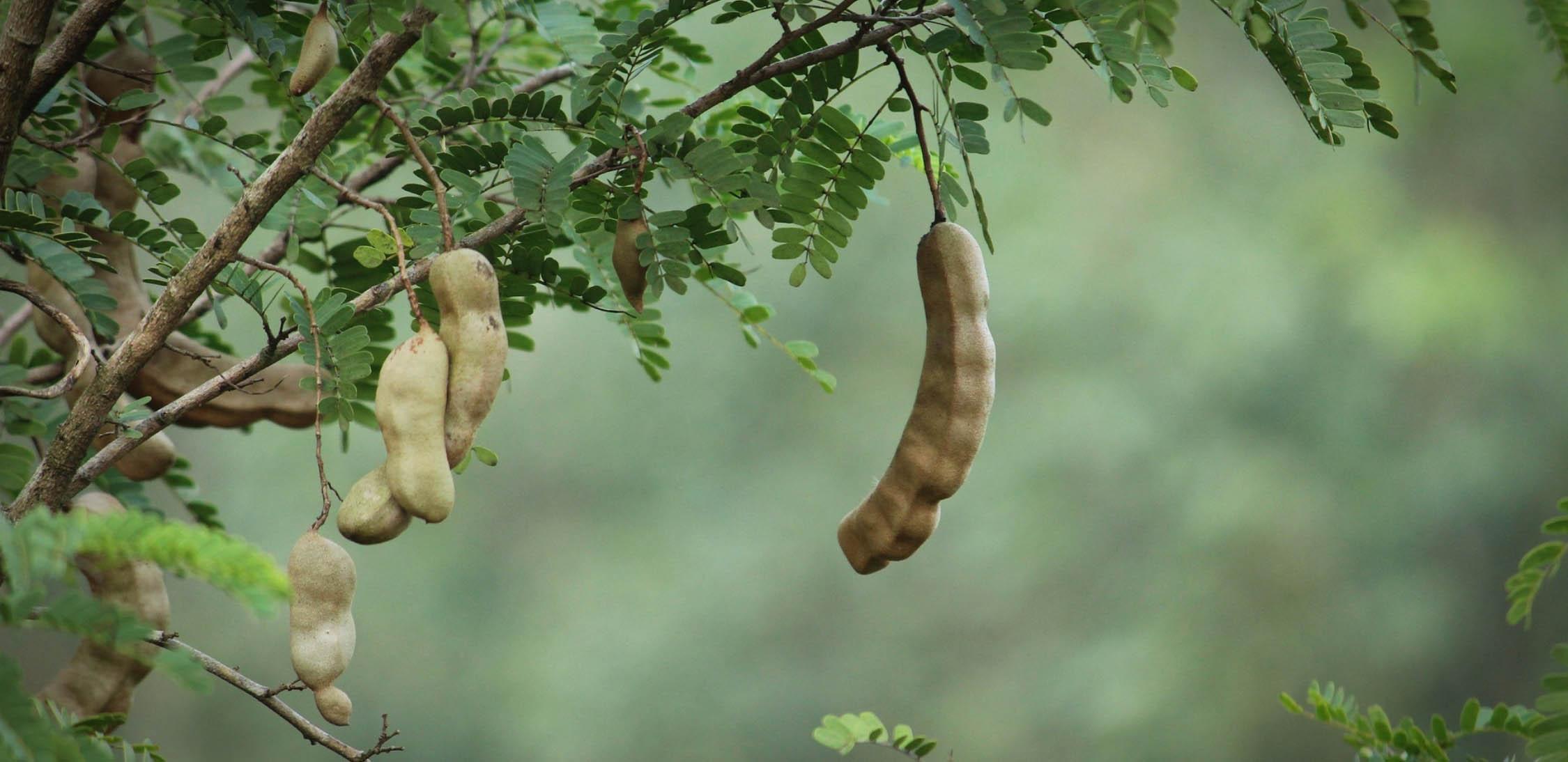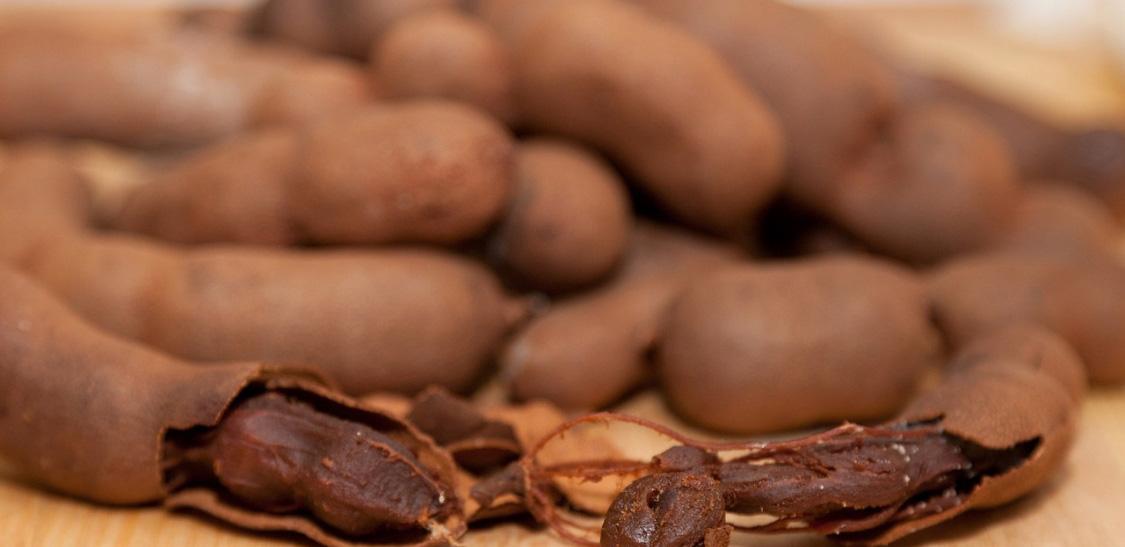
Indian tamarind / Tamarindo
Scientific Name: Tamarindus indica
Origin: Africa
Botanical Family: Caesalpinaceae
The Tamarindo is a tropical, evergreen tree native to Africa, known for its edible, medicinal pods.
Brief History and Description
The Tamarindo is an evergreen tree native to tropical Africa; this tree produces pod-like edible fruits used in almost all cuisines worldwide. Its other uses include traditional medicine and metal polishing. The tree reaches a maximum height of 12 to 18 meters (40 to 60 feet), and the fruit tastes sweet and sour. The fruits have leathery pods, the pod shell is fragile, and the seeds are encased in sticky edible pulp. Moreover, the seeds are irregular, shiny, and smooth. This tropical delicacy has become widely available in recent years.
Culinary Usage and Nutritional Properties
Tamarindo fruit has several nutritional values, including electrolytes and phytonutrients. Various compounds are phenolic substances, volatile components, organic acids, fatty acids, vitamin B1, vitamin B6, vitamin B12, vitamin C, vitamin K, potassium, magnesium, calcium, iron, and phosphorus.
Economic and Environmental aspects
Tamarindo pods contain a green and highly acidic pulp; the pulp inside can be packed for export without adding preservatives due to its long shelf life. The United States imports tens of thousands of kilos of tamarind for medical studies and medicinal applications. The ever-increasing commercial potential of tamarind products has led to intense interest in selected species of the tree, which are now being deliberately cultivated for their many uses. Tamarindo is an evergreen tree, which is helpful for the environment full-time!
Annual Yield
Tamarindo yields up to 175 kg of fruit per year.
Pharmacological Activities and Bio-active Properties
Trypsin inhibitors in Tamarindo seeds can cause its satiating effect,1
There are antimicrobial, antibacterial, antioxidant, anti-snake venom, anti-inflammatory, and anti-diabetic activities with Tamarindo, and it is an important component of cardiac and blood sugar-reducing medicines,2
It helps treat anemia, strengthens immunity and controls diabetes, and fights against cardiovascular diseases,
It protects against cancer, toxins, and allergens, regulates heart rate, and maintains blood pressure,
It helps the proper bone and skeletal structure, growth, and repair of the body, and helps the proper functioning of nerves and muscles,3
It contains ingredients that may have laxative effects and fight certain fungi and bacteria,4
This fruit reduces fever and treats intestinal disorders,5
Green Your Inbox!
With our Newsletters, Stay updated on our Stories of Change and Growth.
As a gift, get a personalised Nature E-card from PH.





